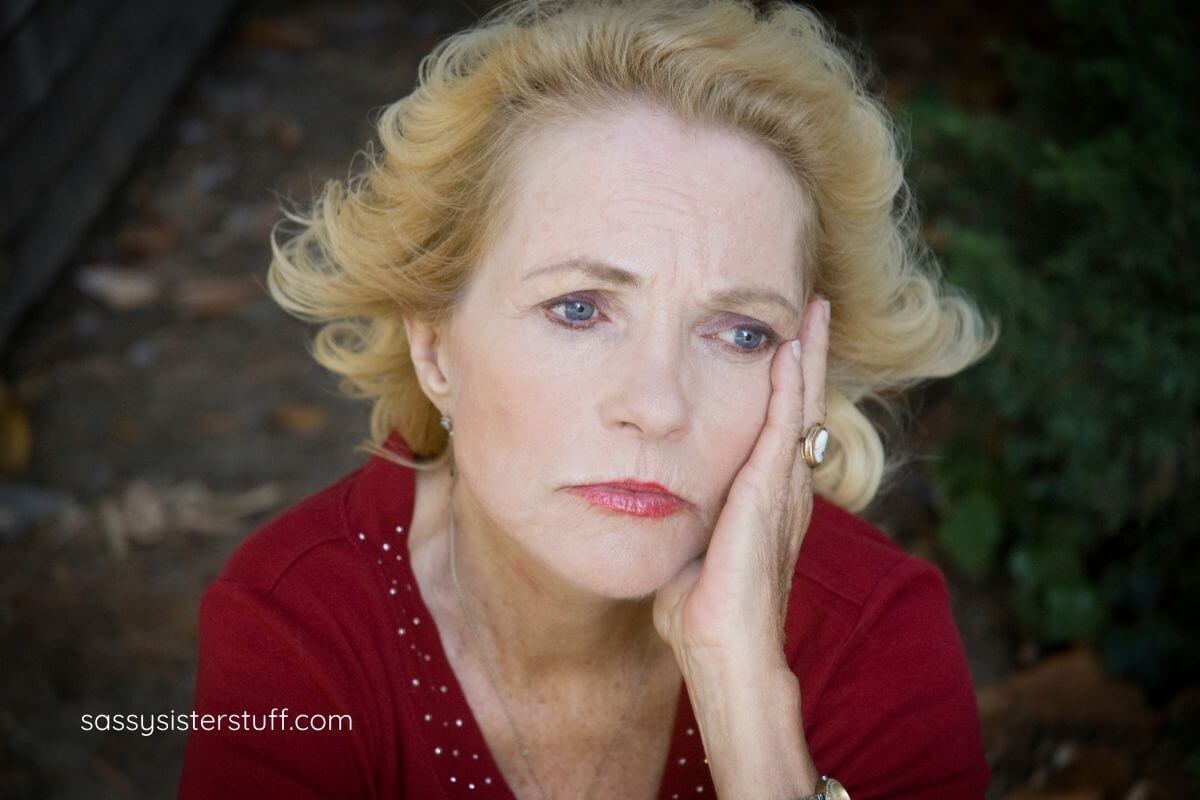Models of Grief: 4 Ways to Process Your Heartache
We all process grief differently but there are theories and models that suggest general steps that people go through while grieving a loss. It’s helpful to understand those steps prior to, and during, the grieving process.
Here, I’m going to share 4 models of grief for your consideration. It has helped me in my bereavement to understand theories of grief following the recent loss of my father.

Not only does it help me understand my own grieving, but it also helps me understand how my children and sister are processing their grief.
You might find that one particular model describes your grief journey, or you might be like me, and find that you relate to aspects of more than one model.
Models of Grief and Loss
Sigmund Freud pioneered the study of mourning back in 1917. Since then, we have seen a variety of experts in the field of psychology develop theories about bereavement, loss, and grief.
These theories often overlap or sound very similar, but they are uniquely identified by different names and visual representations. I’ve found that they are sometimes presented in different ways, too.
Below, I’ve chosen to share four recent models of grief that are easy for the lay person to understand and encompass many of the key aspects of grief and loss theories.
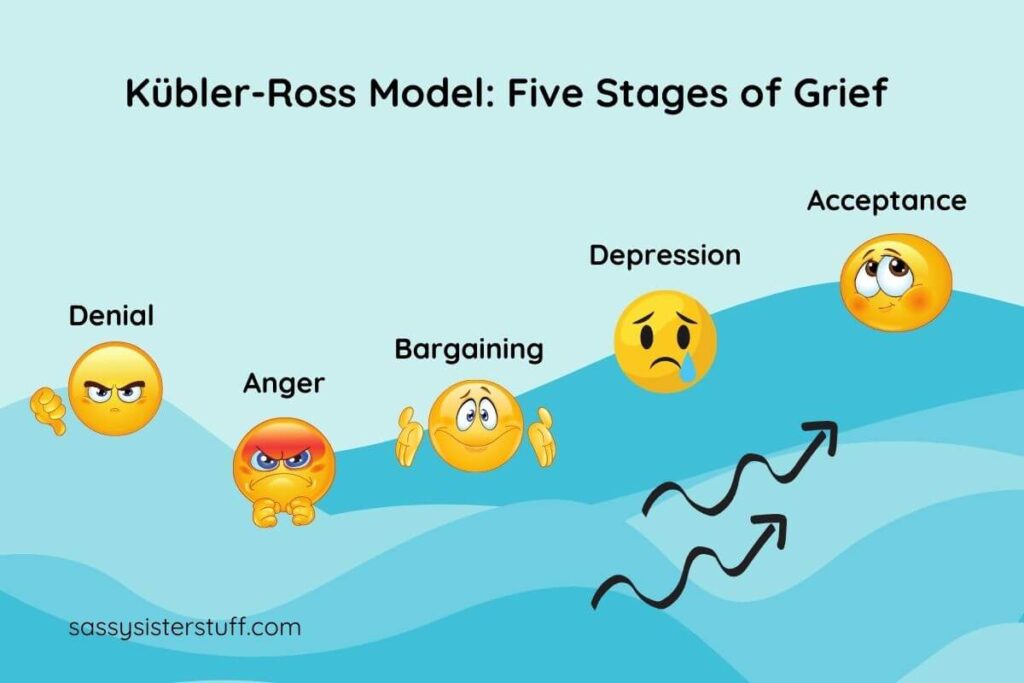
1. Kübler-Ross Model: The Five Stages of Grief
Perhaps the most well-known framework for grief, psychiatrist Elisabeth Kübler-Ross introduced the Five Stages of Grief in 1969.
These stages—denial, anger, bargaining, depression, and acceptance—were originally designed to describe the emotions of terminally ill patients, but they have since been widely applied to all forms of loss.
It’s important to remember that grief isn’t a straight path through these stages. You may experience them in a different order, skip one, or revisit some multiple times.
Denial might provide a temporary emotional buffer, anger can surface as frustration at the unfairness of it all, and bargaining often leads to “what if” thoughts.
Depression may feel like an inescapable fog, but eventually, acceptance arrives—not as an end to grief, but as a shift toward integrating the loss into your life.
Rather than seeing these stages as a rigid process, think of them as milestones—they come like waves washing over you on any given day.
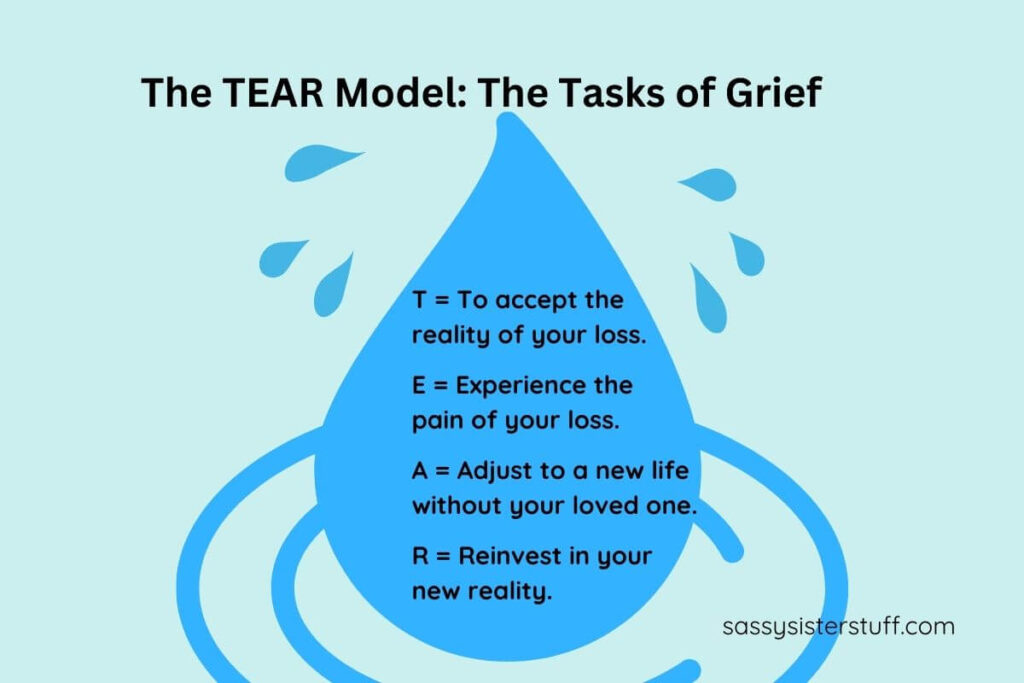
2. The TEAR Model: The Tasks of Grief
Developed in the 1990s, the TEAR Model reframes grief as an active process with specific tasks that help you move forward.
Rather than just waiting for grief to pass, this model emphasizes the steps we take to heal:
- T = To accept the reality of the loss
- E = Experience the pain of grief
- A = Adjust to a new life without your loved one
- R = Reinvest in the world while maintaining a connection to what was lost
This model acknowledges that healing isn’t about “getting over it” but about learning to live with it. Acceptance may take time, but acknowledging the loss is the first step.
Fully experiencing the pain—without suppressing it—is necessary for true healing. Adjusting to life without your loved one is about reorienting yourself, and finally, reinvesting in life means finding purpose and joy again while still honoring the past.
This approach encourages growth within grief—moving forward without erasing the love or the memories.
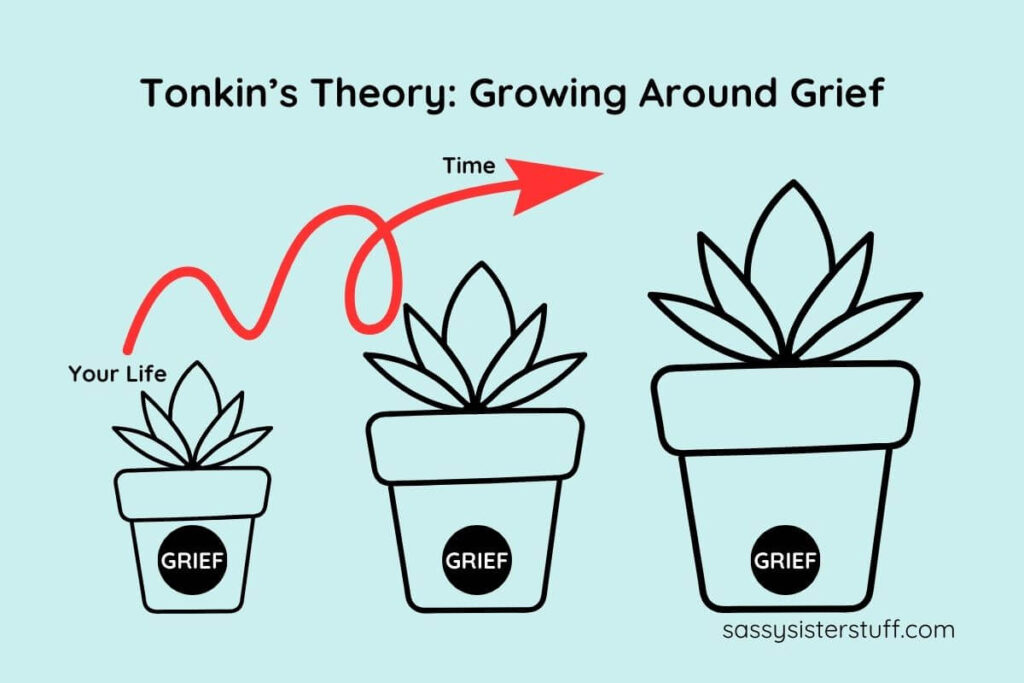
3. Tonkin’s Theory: Grief Doesn’t Shrink—You Grow Around It
In 1996, Lois Tonkin introduced a different way to think about grief. Unlike other models that suggest grief fades over time, Tonkin’s theory proposes that grief remains the same size, but life grows around it.
Imagine your grief as a circle. At first, it fills up your entire world. But over time, new experiences, relationships, and moments of joy begin to form around it, making the grief feel smaller in comparison—even though it never actually shrinks.
This model is a relief for many because it acknowledges that grief doesn’t magically disappear. Instead, you create space for new memories, opportunities, and love while carrying your loss with you.
It’s a comforting reminder that even after profound loss, life can expand again. This is the grief model that I’ve found the most helpful through my losses.
I have a very close family and lots of friends, all of whom keep me quite busy. I have family members who live with my husband and me; I have a sister who has Alzheimer’s Disease; I have children and grandchildren who keep us on the go. And I still have cherished girlfriends from all parts of my life.
I don’t know how I ever had time to work before I retired. My life has definitely grown around my grief over the months and years. Thankfully with the loving help of my family and friends, but I cherish my wonderful memories of my dad and mom.
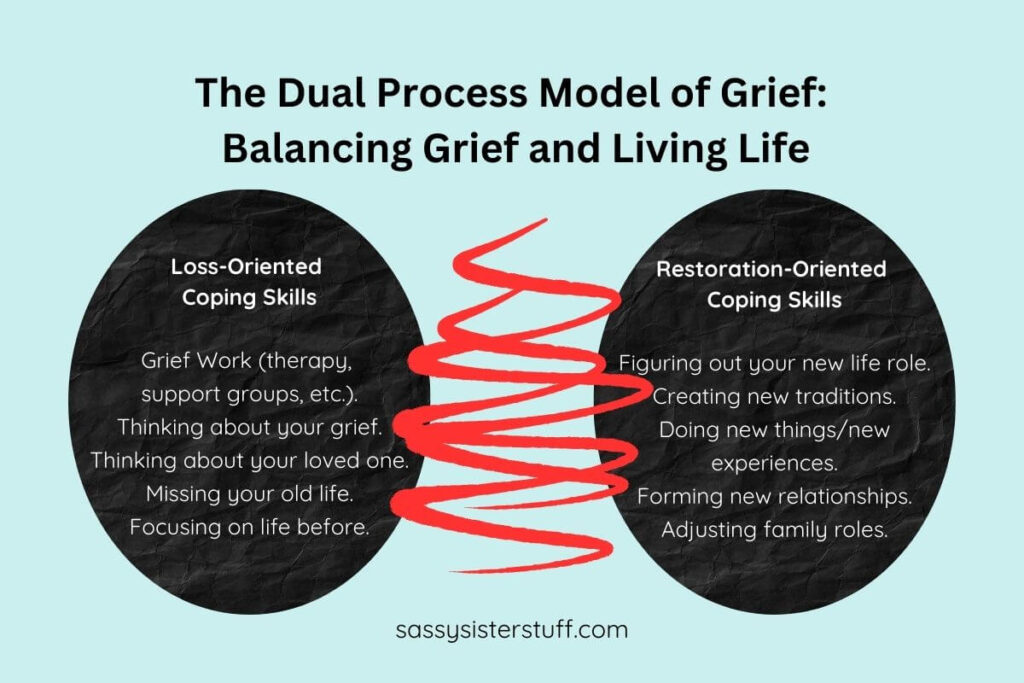
4. The Dual Process Model of Grief: Balancing Grief and Living Life
Developed in 1999 by Stroebe and Schut, the Dual Process Model recognizes that grief isn’t just about feeling the loss—it’s also about adapting to daily life. This model describes two ways people process grief:
- Loss-Oriented Coping – Focusing on the emotional pain, memories, and feelings of longing.
- Restoration-Oriented Coping – Adjusting to life changes, handling daily responsibilities, and rediscovering joy.
Unlike other models that suggest moving through grief in stages, the Dual Process Model recognizes that people oscillate between these two modes.
Some days, you might be deep in grief, feeling the full weight of your loss. Other days, you might find yourself engaging with life again—going to work, laughing with friends, or making future plans. Both are necessary, and neither invalidates the other.
This model is empowering because it reassures you that having good days doesn’t mean you’re forgetting your loved one, and having hard days doesn’t mean you aren’t healing. It’s all part of the natural rhythm of grief.
I can also relate to this theory of grief and loss. I certainly oscillate in my emotions and ability to function every day. So I generally feel like I’m doing ‘okay’ in my grief journey.
How Can Grief Models Help You?
Grief models, like those identified here, can be helpful in understanding and coping with grief by providing a framework to process emotions and adapt to loss, but they shouldn’t be treated as a rigid checklist.
Here’s how grief models can be used to help with grief and loss:
- Understanding the Process: Grief models can help you understand that your feelings and reactions are normal, even if they seem intense or prolonged.
- Identifying Stages and Patterns: Models like Kubler-Ross’s stages (denial, anger, bargaining, depression, acceptance) can help identify the different phases of grief, allowing for a more structured approach to processing your emotions.
- Recognizing and Validating Emotions: Grief models can help validate the wide range of emotions you experience during grief, such as sadness, anger, guilt, or confusion.
- Facilitating Communication and Support: Understanding models of grief can help you communicate your needs and experiences more effectively, allowing for better support from friends, family, or professionals.
- Promoting Coping Mechanisms: Models like the dual-process model (loss-oriented and restoration-oriented coping) can encourage you to engage in both emotional processing and practical tasks, promoting a more balanced approach to healing.
- Finding Meaning and Purpose: Grief models can help you find meaning and purpose in your loss, helping you integrate the loss into your identity and self-narrative.
- Remembering and Honoring the Deceased: Models of grief can help you find ways to remember and honor the deceased, such as through writing, art, or sharing memories.
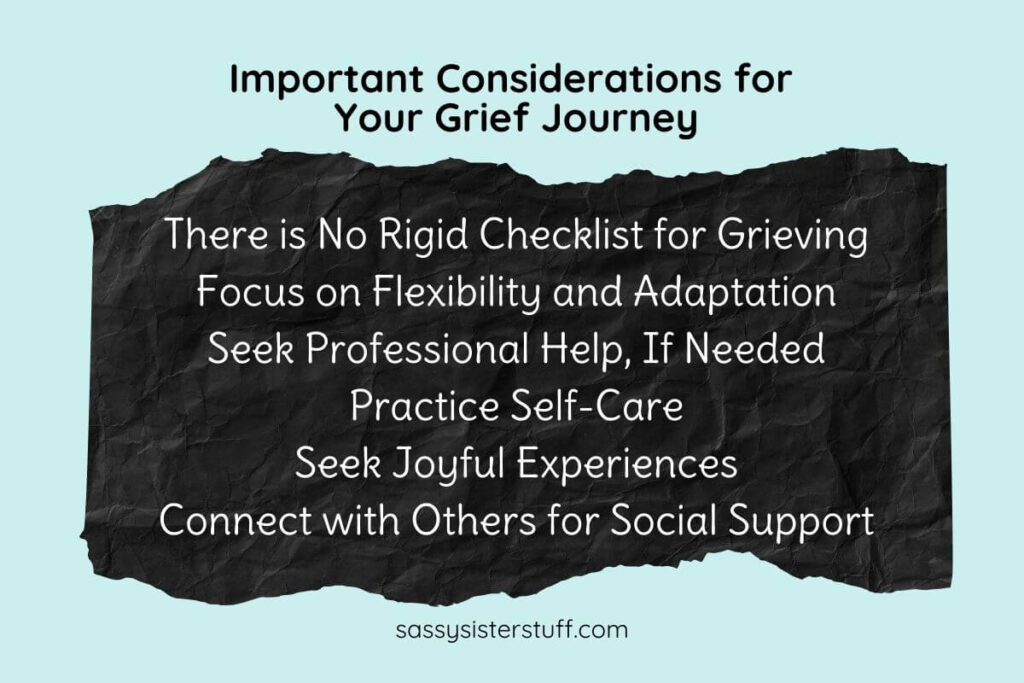
Important Considerations for the Grief Journey
Now that you have important information to help you understand and support your grief journey, please note these important considerations:
- Not a Rigid Checklist: Grief is a highly individual process, and you (and your loved ones) may experience grief in different ways and at different paces.
- Focus on Flexibility: Grief models should be used as a guide, not a rigid checklist, allowing for flexibility and adaptation to individual needs.
- Seek Professional Help: If grief is overwhelming or interfering with daily life over time, seeking professional help from a therapist or counselor can be beneficial.
- Self-Care: Engaging in self-care activities, such as getting enough sleep, eating nutritious meals, and engaging in activities that bring you joy, can be helpful during the grieving process.
- Social Support: Connecting with others who understand and support the grieving process can be invaluable. Many communities and churches have grief support groups.
The Healing Power of Community: You Don’t Have to Grieve Alone
Grief can feel like an isolating storm—one that makes you want to retreat into yourself, avoiding the world while you process the loss.
I know from experience with my mom and dad’s death. They occurred during my 50’s and 60’s.
But here’s the truth: Healing happens in connection. While solitude has its place in grief, surrounding yourself with a supportive community can help you navigate the hardest moments with strength and love.
During my bereavement journeys, it was easier to lay in bed and mourn the loss of my parents alone. Thankfully, I had girlfriends and family who kept me from doing that.
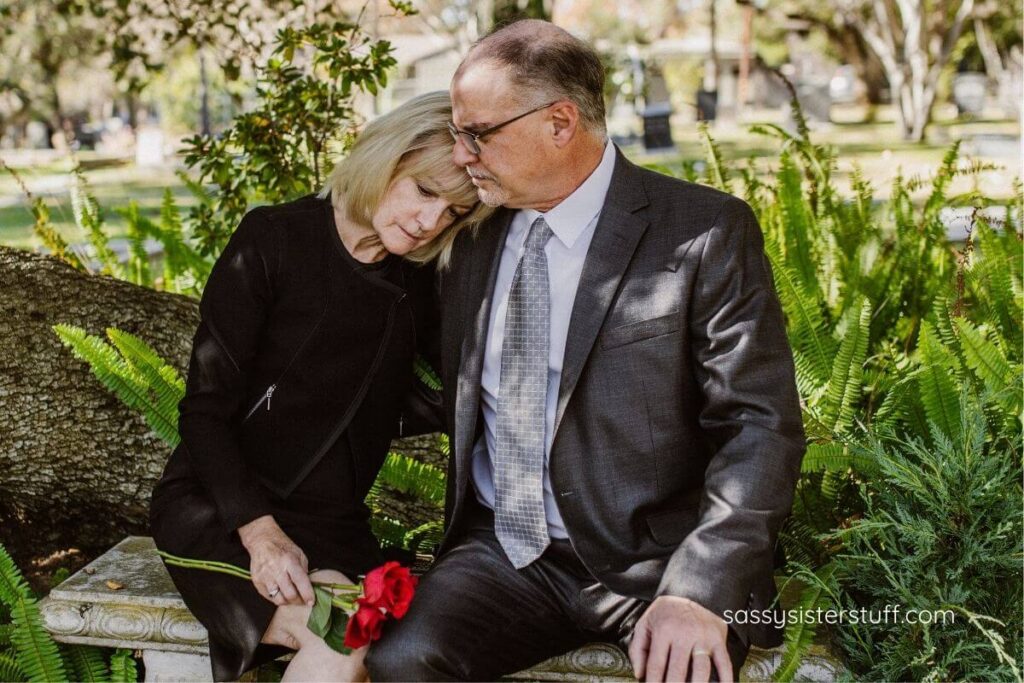
Finding Your People in the Storm
Whether it’s a close-knit group of family and friends, a grief support circle, or an online community of like-minded souls, having people who “get it” can make all the difference.
They don’t have to fix your grief (because no one can), but they can stand beside you, offering comfort, validation, and a reminder that you’re not alone.
Even if you’re used to being the strong one, let people show up for you. This was very hard for me because I’m typically the strong one and don’t find it easy to be vulnerable.
But a simple “I’m struggling today” text to a trusted friend can open the door for support. And, when friends call to get you out of the bed to go to lunch, say “yes, of course” and get up and do yourself up real pretty.
The Role of Sisterhood in Healing
For women in midlife, friendship and sisterhood become even more vital. Loss can shake your identity, but being surrounded by people who uplift you can help rebuild your sense of self.
Your Sassy Sister Squad—whether in real life or online—can offer laughter, shared wisdom, and a safe space to talk about the memories, the heartbreak, and even the little joys that start to return over time.
If you don’t have a strong support system, seek out local grief groups, church communities, or even online spaces where connection and compassion thrive.
Healing doesn’t happen in isolation—it happens in love, shared stories, and the quiet knowing that you are held in the hearts of others.
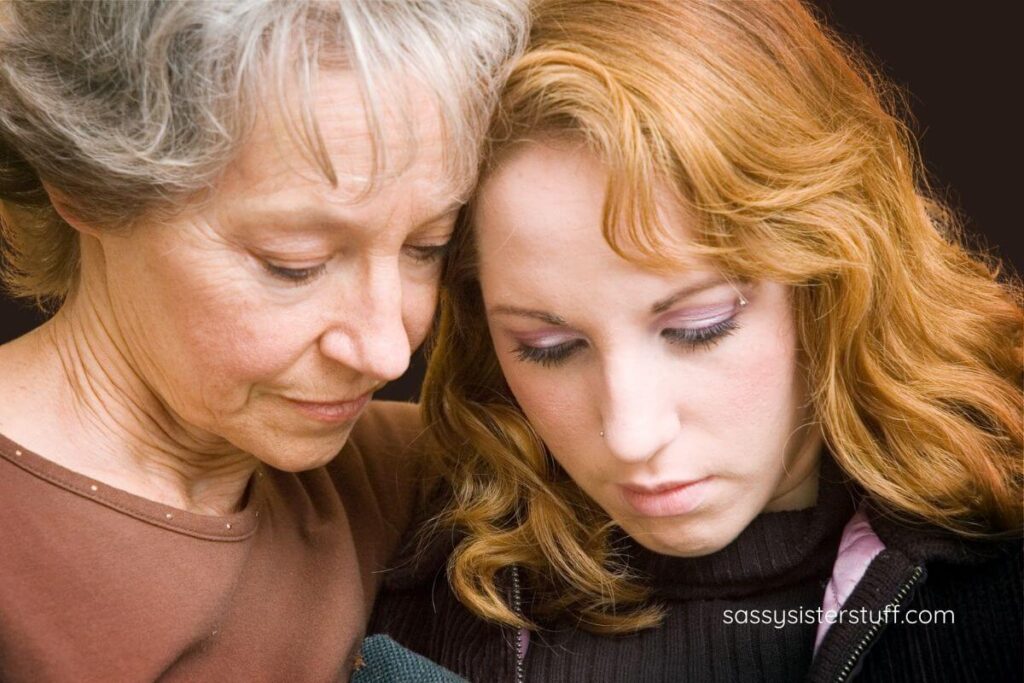
How Grief Hits Differently in Midlife
Grief in midlife carries a weight that feels different from any other stage of life. By this time, we’ve likely weathered losses before—whether it’s the passing of loved ones, the end of relationships, or the quiet grief of children growing up and moving on.
But each loss in midlife comes with a new layer of complexity. We’re not just grieving the person we lost; we may also be grieving the role they played in our lives, the sense of stability they provided, or even the realization of our own mortality. This has been a big one for me.
Unlike in our younger years, where loss might feel like a rare, earth-shattering event, midlife grief often arrives with an unsettling familiarity.
We’ve seen heartbreak before, and while that experience gives us perspective, it doesn’t necessarily make it easier.
What it does do, however, is help us process grief with a deeper understanding—we know that the waves of sorrow will come and go, and we’ve learned that healing isn’t about “moving on” but about learning to carry love and loss together.
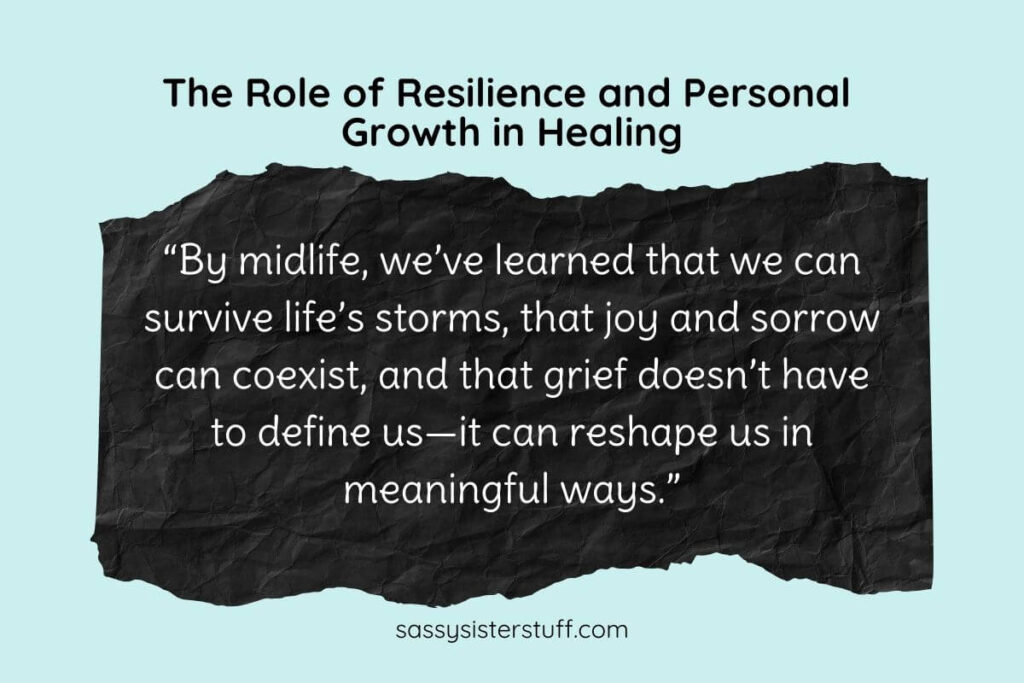
The Role of Resilience and Personal Growth in Healing
One of the gifts of midlife is resilience—the kind that’s earned through years of overcoming challenges. While grief is still painful, we often have a stronger emotional toolkit to navigate it.
We’ve learned that we can survive life’s storms, that joy and sorrow can coexist, and that grief doesn’t have to define us—it can reshape us in meaningful ways.
At this stage, personal growth also becomes a powerful part of the healing process.
Loss has a way of making us reflect on what truly matters, helping us realign our priorities and deepen our appreciation for life’s fleeting moments.
Grief can be a teacher, showing us how to embrace life with more intention, love more fully, and cherish the people who are still with us.
Rather than seeing grief as something to “get over,” midlife teaches us to integrate it into who we are—allowing it to add depth to our experiences, wisdom to our journey, and a greater appreciation for the connections that sustain us.
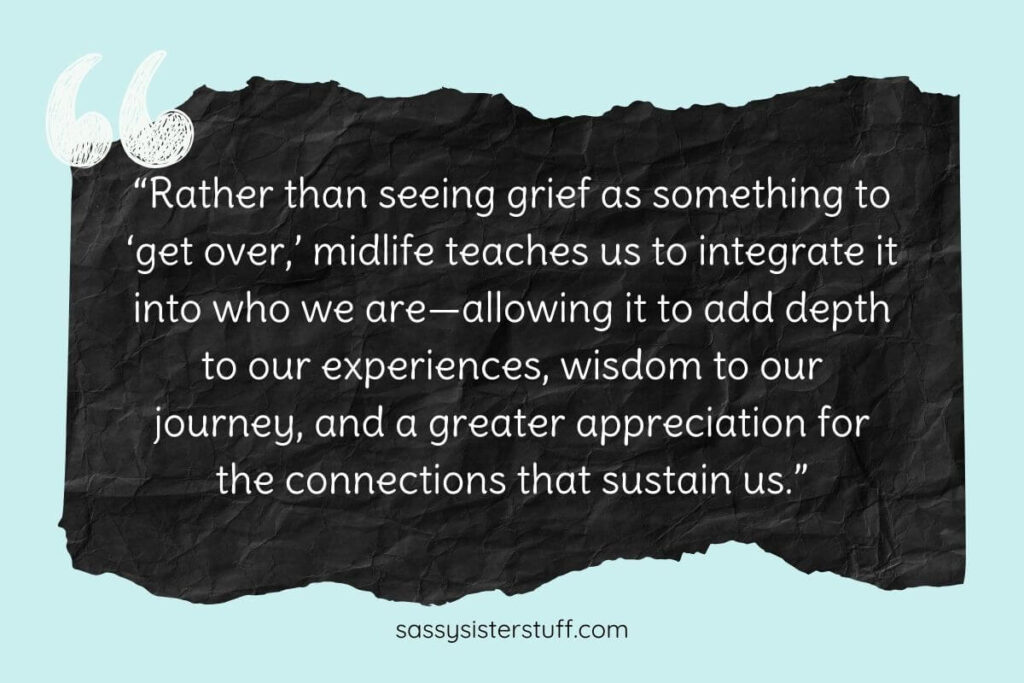
Final Thoughts
Grief is never a one-size-fits-all journey, and there’s no right or wrong way to process it.
Whether you move through the familiar stages, tackle grief as a task, grow around your loss, or oscillate between sorrow and healing, the key is to give yourself grace.
Allow your wisdom, resilience, perspective, and life experience to help you navigate loss with depth and meaning.
No matter where you are in your grief, you are not alone—healing happens in your own time, in your own way, and with the support of those who walk alongside you.
Related Articles:
Love to ALL! ~ Susan

